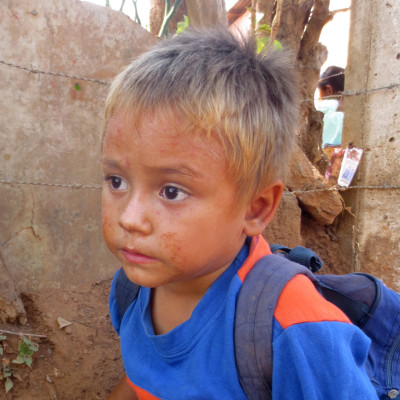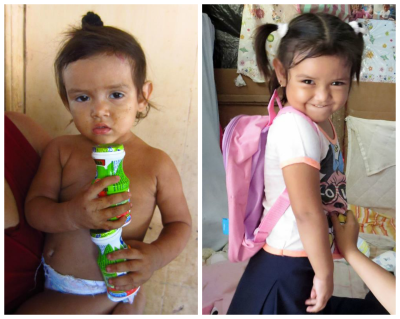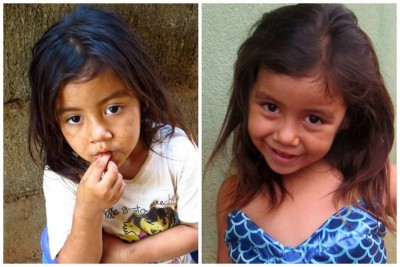 A majority of the children that come to Education Plus are hungry and malnourished. The meal that they receive at our school may be the only meal they receive that day, and some may not receive meals at home for days at a time. Even children that do receive meals at home end up malnourished because the inexpensive staples – rice and beans and oil – lack the necessary nutrients that children need to develop. Milk is expensive for families and so many mothers give their children only sugar water. This is why sometimes children as old as 2 years old still cannot walk.
A majority of the children that come to Education Plus are hungry and malnourished. The meal that they receive at our school may be the only meal they receive that day, and some may not receive meals at home for days at a time. Even children that do receive meals at home end up malnourished because the inexpensive staples – rice and beans and oil – lack the necessary nutrients that children need to develop. Milk is expensive for families and so many mothers give their children only sugar water. This is why sometimes children as old as 2 years old still cannot walk.
Evidence of malnutrition in children can mostly be seen in lack of pigmentation in hair and skin, and also in energy levels (a telltale sign is children who chronically fall asleep in class and never smile). Distended bellies and extreme thinness are also obvious sign. However, obesity can actually be a signal of both malnourishment and undernourishment. Obesity in our children comes not just from eating poor quality food, but also because many of our children were undernourished in the womb and as babies. Because of this, their bodies can no longer metabolize and store what food they do eat properly. As a result, their bodies store fat more readily than your average, non-malnourished person.

While it is easier to see the change long-term change in nutrition levels in girls hair because they tend to wear it longer, you can see what just two weeks worth of proper nutrition made in Jose’s hair
For this reason, ten percent of adult Nicaraguans have Type II Diabetes, and one in four women in Nicaragua will die of this disease. This is why it is so important to break the cycle of malnutrition if our children are to have a chance at real futures.
With your support, we fight malnutrition by providing at least one balanced meal and glass of milk or natural juice per day to all of our children, as well as a banana before they enter class, and a daily multivitamin for children 6 and under. Every day our children receive a serving of fruits, a serving of vegetables, and a protein.
To help us in our mission to feed, educate, bring joy, and form a bright future for these children please consider visiting our donation page and making a donation today.
Before (2012) and after (2014) photos of two of our current students. You can see the major difference in energy levels.
.
.
Below are photos and stories from 2012, our first year in operation. Thanks to you, our supporters, things are much different today. We now have 180 healthy children thanks to you.

Sweet little Karen in front of her house, where she lives with her mother and 2 siblings. The kitchen is a pile of wood located inside of the plastic bag house.

Elia is shown here smiling after an art project day. If you have a look at her arms though, you can see how skinny she is. She and her sister frequently ask for more food at school because they are very hungry. When they get their food, they eat it rapidly, as if they are afraid someone might take it away.

Little Diana (1.5), was recently very sick and had to go to the hospital. When her mother was asked what she fed her, she replied, only water and kool-aid, as this is all she could afford at the time. While we do not normally provide food to individual families, we went out and bought Diana milk and yogurt (pictured) as we considered this an emergency situation. She is now doing much better.



